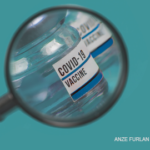Why the lower dose may be more effective than the higher dose is not clear. The most logical answer is that it is not. The difference may be the result of a statistical fluke, and it is possible that if the trial had continued to enroll patients, the difference may have eventually disappeared. If the difference is real, it might be that the higher dose stimulated a more robust response against the adenoviral vector itself, which prevented it from reaching its target.6
Even if the AstraZeneca vaccine is somewhat less effective than its brethren, it is hard to call it an inferior product. The Pfizer vaccine is a prima donna whose exacting requirements need to be met if we want her to perform: The vaccine needs to be stored at -70°C. Each vial contains five doses of the vaccine; each vial must be thawed, split and administered in short order to be effective.7
The AstraZeneca vaccine is a working grunt. Refrigerated, it is stable for a month; frozen at -20°C, it is stable for six months. Cheap to manufacture, easy to transport, it’s no wonder that many countries have turned to the AstraZeneca vaccine for salvation.8
Remembering that vaccine development in the past has taken years, or even decades of work, it is truly incredible that we now have three vaccines against a virus that none of us had heard of a year ago, with even more options on the way. But who goes first?
Remembering that vaccine development in the past has taken years, or even decades of work, it is truly incredible that we now have three vaccines against a virus that none of us had heard of a year ago, with even more options on the way. But who goes first?
Waiting Your Turn
Pity the poor souls who populate the Advisory Committee on Immunization Practices (ACIP); they could have never suspected their sleepy committee might be the center of so much attention. Established in 1964 by the U.S. Surgeon General, the ACIP is a committee within the Centers for Disease Control and Prevention that is responsible for making recommendations regarding vaccine-preventable diseases.9 The question of who should be vaccinated first falls squarely within their mandate.
On Dec. 1, the ACIP suggested a phased allocation of COVID-19 vaccine supplies.10 Not surprisingly, the committee suggests that first dibs should go to healthcare personnel and long-term healthcare residents. Together, these groups represent approximately 24 million people. To put this in perspective, by the end of 2020, Pfizer and Moderna will have supplied the U.S. with enough vaccine to vaccinate only 22.5 million people.11 And that’s just phase 1a.



